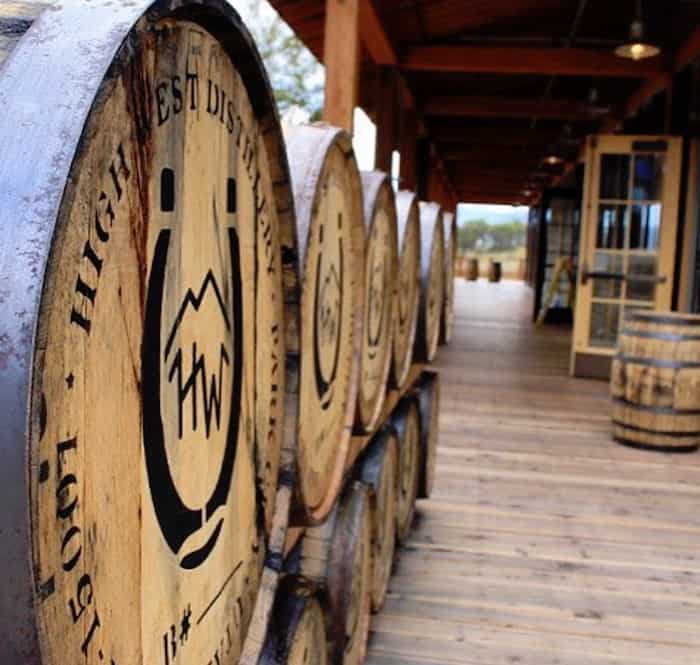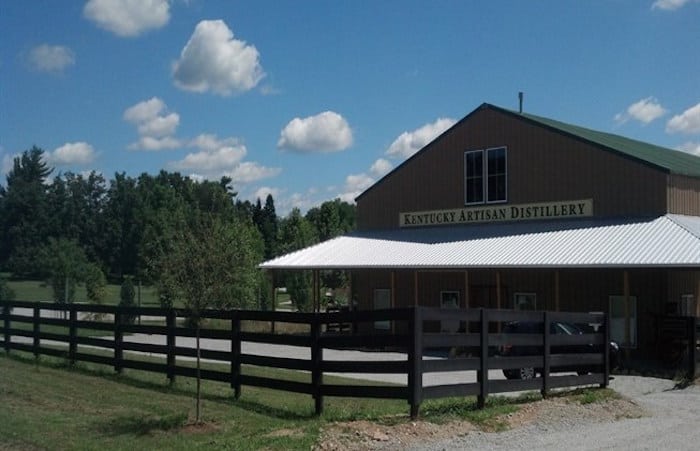American non-distiller producers, a.k.a. NDPs, get a lot of flack from whiskey purists. Granted, some of them deserve it. Oh, you’re making whiskey just like your grand-pappy did before Prohibition? Really? So your grand pappy used to bottle his whiskey from a big distillery in Indiana too? However, several of these NDPs have been vocal about sourcing their whiskey all along, deliberately creating blends with a vision toward producing specific flavor profiles, often finishing them in unique casks.
For some reason, blended whiskey from multiple distilleries is a perfectly acceptable practice in Scotland and other parts of the world – just ask any Johnnie Walker Blue aficionado or Compass Box Flaming Heart collector. The head whiskey maker at single malt distilleries is even referred to as the “master blender.” However, do it in the U.S. and people hurl accusations of bamboozlement and incompetence, saying things like bottling sourced whiskey is akin to taking credit for someone else’s barbecue sauce or repackaging grocery store cookies someone else has baked.
Non-distiller producers: High West
Some NDPs have been making their own distillate behind the scenes as they continue to source whiskey for blends. Smooth Ambler, for example, recently released a successful product called Contradiction – whiskey that contains both in-house distilled whiskey and sourced, named thusly by founder John Little as a deliberate birdflip to whiskey purists. While a few of them have been sourcing as their own whiskey matures, the majority of NDPs working from their own distilleries have no plans to switch gears entirely.

High West out of Utah is one of the brands leading the pack. Distiller Brendan Coyle had this to say:
“You see articles saying that a lot of these younger producers who are buying spirits from places like MGP and so forth is a means to an end, they’re just doing it until they have their own juice ready. That’s really not our long term goal… The way we look at it is that the spirits we buy from MGP and from distilleries in other parts of the world all have different flavor profiles than what we make in our own still.
Almost everything we’ve purchased from other producers was made in a column still. We have a pot still. We’re sourcing these other spirits to fill in the flavors we need to round out these complex blends we’re creating… There are a few things I can’t discuss about where we source from for contractual reasons, but usually what we’re focused on for these sourced whiskies is unique grain profile, or unique yeast strain.
There’s a longstanding tradition in other alcohol industries, mainly the wine industry and the scotch whisky industry, where they’ve been blending for a long time. At some point the powers that be decided America wasn’t going to go that way and focus on doing our own thing. For a long time, that’s how it worked.”
One of the most successful High West releases was the Campfire blend, which might include High West’s own distillate some day simply for the sake of it. Says Coyle, “We just did our own production of a peated whiskey in our Park City still. The ultimate goal is we’d like to produce our own peated malt for the Campfire blend. Somewhere down the line maybe a peated single malt, but that’s just an idea at this point. We want to do it because it’s fun.”
Non-distiller producers: Jefferson’s
One of the most famously maligned NDPs in the business is Trey Zoeller, founder of Jefferson’s Bourbon, who is also now in the process of producing his own whiskey at Kentucky Artisan Distillery. While Jefferson’s has thousands of hardcore fans who thirst for experimental releases such as the Ocean Aged Bourbon (made from mature whiskey that spends an additional few months sailing around the world on an OCEARCH shark research vessel enhanced by the motion of the ocean and the marine elements), Jefferson’s has many detractors who seem to have lots of free down time to sling barbs on the Internet.
Zoeller told us he has no plans to significantly change his product, only enhance it. “I guess producing all your own whiskey is legitimate, but what we’re hoping to achieve more than that is to make it consistently. You can’t do that on your own.”
He explains the move to his own distillery by saying:
“We use the Kentucky Artisan Distillery as a home base where we do the experiments we’ve been working on. We’ve had to use a number of different facilities in the past, and this brings it into one home…. while it’s important for us to have a home and we’re excited about that, that is a small part of our overall business plan. What we’re all about is taking the science of distillation that’s been perfected and then after maturing it properly in Kentucky for a long period of time, we start to massage the liquid for the bourbon and kind of push traditional distilling and aging.
So we’re not just distilling and aging and bringing it down to proof and bottling it up, we’re always doing something more – whether that’s blending, finishing, changing the environment of the maturation process, a combination of all that, we’re working with different techniques to bring out different flavors.
So it’s more nature vs. nurture, nature being distillation [laughs]… I think over the last 150 years distillers in Kentucky have perfected it, and that’s why I still count on them and rely on them and they do a fantastic job for us. It’s what we do with it afterwards that makes all the difference.”

Another reason distilling one’s own juice is important is that sources do run out. Zoeller had to discontinue Jefferson’s successful 10 Year Rye until he finds a suitable replacement for the sources that ran dry on the mature whiskey used to create it. Then there are other factors to consider, says Coyle. “We should be prepared to make all our own whiskey if we had to. If heaven forbid there was a catastrophic accident at a distillery we work with or that sort of thing. We always have to be prepared.”
Coyle from High West, meanwhile, is noticing that consumers are starting to “get it:” “When we started in 2007/2008, all we had was backlash. I remember going to shows and seminars and I’d have to steer through a lot of negative comments. Over time, where I saw a big change happen was around 2011-2012, and that’s when we had more supporters voicing their belief in the blends and variety of what we’re doing, a shift in the marketplace. I’ve personally noticed more praise and less irritation when we’re out there. It’s a slow drive. Education has been slow.”
Peated whiskey and ocean aged bourbon? Nope. Definitely not like how grand pappy made it.







